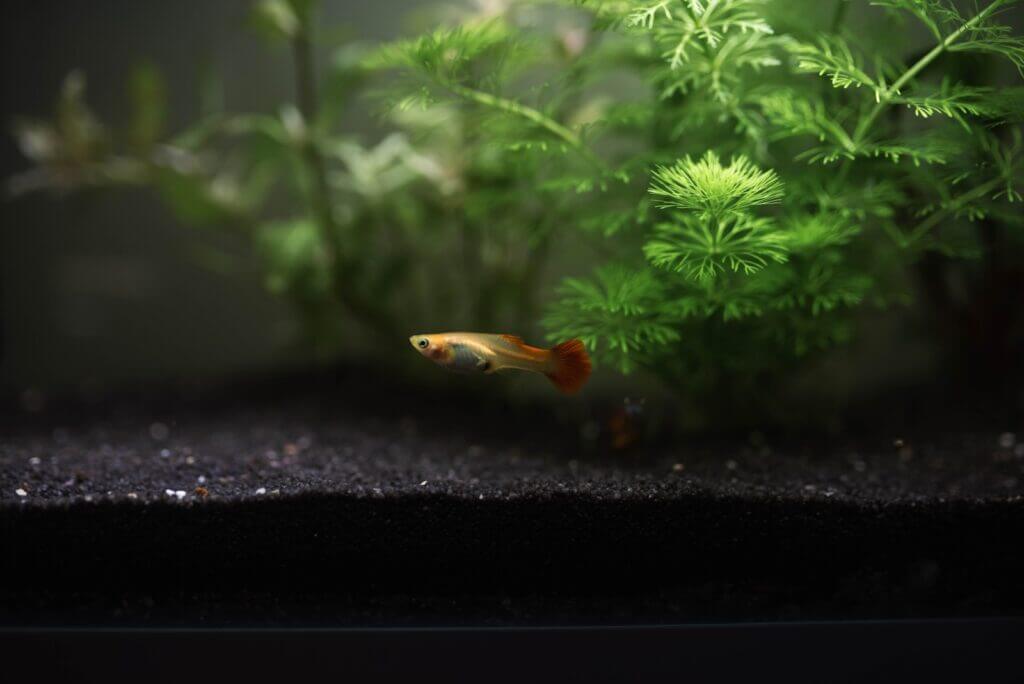Endlers and guppies are two of the most popular freshwater fish kept by aquarium hobbyists. As small, colorful livebearers, they have a lot in common. But there are also key differences between endlers and guppies in terms of appearance, behavior, care needs, and suitability for community aquariums.
So if you’re trying to decide between these lively little fish, read on as we compare endlers vs guppies to help you determine which livebearer is right for your tank.
An Overview of Endlers and Guppies
To start, let’s look at the background of each fish:
Endlers – Endlers livebearers (Poecilia wingei) are named after German aquarium enthusiast Frank Endler. They are closely related to common guppies but are a separate species native to Venezuela. Endlers remain much smaller than guppies.
Guppies (Poecilia reticulata) – Guppies originate from South America as well, with wild populations in Venezuela, Barbados, and several other Caribbean islands. They come in a huge variety of tail shapes, patterns, and colors thanks to extensive breeding.
Both endlers and guppies are members of the family Poeciliidae and share livebearing reproduction. But there are some important differences between these popular aquarium fish species as we’ll explore next.
Key Differences in Appearance and Size
One of the biggest differences between endlers and guppies is in their visual appearance:
Size
- Endlers rarely exceed 1.5 inches in length, with females remaining under an inch.
- Guppies can grow over 2 inches long, with show quality fancy guppies having long flowing tails and fins.
Colors and Patterns
- Endlers have vibrant colors like orange, yellow, blue, and black, with distinct spots and speckles. The pattern is referred to as a “tuxedo.”
- Guppies come in virtually every color and have diverse tail shapes like deltas, halfmoons, veils and more depending on the variety.
Fins
- The caudal (tail) fin on male endlers is smaller and more rounded.
- Male guppies flaunt large, elaborate caudal fins that are the focal point. Some tail types sweep 180 degrees.
So in summary, guppies grow larger, have more dramatic fins and vary wildly in color patterns compared to the more uniform endler.
Endler Vs Guppy: Temperament and Behavior Differences
Endlers and guppies also differ in their general temperament and behavior:
Activity Level
- Endlers school more tightly and exhibit busier, more energetic behavior darting around the tank.
- Guppies are slightly calmer and don’t shoal together as uniformly, especially long-fin varieties.
Nipping and Aggression
- Male guppies may harass each other, stressing out less bold fish. Their elaborate fins are also nip targets.
- Endler males show less aggression with minimal fin nipping issues. They usually get along well.
Hardiness
- Endlers tend to be more resilient to fluctuating water parameters and recover better from stress.
- Sensitive, fragile guppy strains exist, especially fancy varieties with delicate long fins.
So endlers generally have an easier going temperament and hardier constitution compared to guppies. But guppies display more mesmerizing fins.
Diet and Care Comparison
Caring for endlers vs guppies is fairly similar overall, but with a few subtle differences:
Diet
- Both readily accept most prepared and frozen foods designed for small livebearers.
- Guppies have a bigger appetite. Endlers eat smaller amounts given their tiny size.
Tank Size
- A 10 gallon tank houses endlers comfortably since they stay under 2 inches.
- Standard guppies need at least a 10 gallon tank, while show guppies need 20+ gallons.
Water Parameters
- Endlers adapt well to a wider pH range from neutral to slightly acidic.
- Guppies prefer slightly hard, alkaline water between 7.0-8.5 pH range.
Tankmates
- Peaceful community fish make the best tankmates for both endlers and guppies.
- Avoid housing with aggressive species that may attack, nip fins, or stress them.
Both fish are undemanding overall if provided clean water, good food, and calm tankmates. Guppies just tend to be less tolerant of water quality issues.
Breeding and Reproduction Differences
The breeding habits of endlers vs guppies have some noteworthy differences:
- Endlers only breed with their own species while guppies readily hybridize with other livebearers.
- Endlers can store sperm for several months allowing intermittent breeding cycles.
- Guppies engage in constant mating with a shorter gestation period and babies born every 4-6 weeks.
- Endler fry grow quicker and become independent sooner than guppy fry.
So in general, endlers have a more gradual, manageable reproductive pace compared to guppies. Guppies can overrun a tank with babies!
Which Fish is Right For You?
Now that we’ve compared endlers and guppies in depth, let’s summarize the key points to consider when choosing between the two fish:
For small peaceful community tanks: Endlers win. Their tiny size, vivid colors and gentle temperament make them ideal for 10-20 gallon community tanks.
For larger show tanks: Guppies are the clear choice. Nothing beats extravagant long-fin male guppies as visual centerpieces in bigger aquariums.
For breeding interest: Endlers are easier to manage. Their slower reproductive rate and hardier fry are more forgiving for beginners venturing into livebearer breeding.
For kids and classrooms: Endlers are nearly indestructible, able to tolerate a wide range of water conditions. This makes them a better option for younger or inexperienced caretakers.
For expert aquarists: Either fish can be rewarding! Experts appreciate the diversity of guppy strains, or may prefer to specialize in improving endler lines.
The needs of your particular tank and your level of fishkeeping experience will dictate whether lively endlers or flashy guppies are the better livebearer for you. Hopefully this comparison has provided some useful insight into choosing between these two popular aquarium fish.






